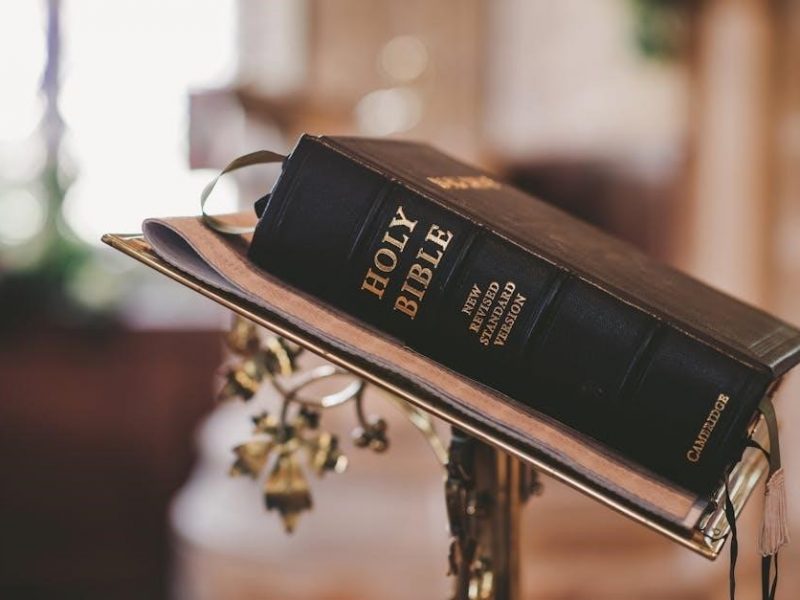Emma‚ a novel of manners by Jane Austen‚ explores the life of Emma Woodhouse‚ a wealthy‚ intelligent young woman in 19th-century Surrey. The story delves into themes of social class‚ matchmaking‚ and personal growth‚ offering a witty commentary on the societal norms of Austen’s era.
1.1 Background and Historical Context
Emma‚ written by Jane Austen in 1815‚ is set in the early 19th century in Surrey‚ England. The novel reflects the social structure of the time‚ emphasizing class distinctions‚ gender roles‚ and the limited options for women. Austen critiques societal norms through Emma’s experiences‚ blending humor and irony to explore themes of matchmaking‚ personal growth‚ and the complexities of relationships in a rigidly stratified society.
1.2 Overview of the Novel’s Structure
Emma is structured into three volumes‚ each containing chapters that chronicle Emma Woodhouse’s journey. The narrative begins with Emma’s resolve to act as a matchmaker‚ followed by a series of misadventures and misunderstandings. Set in Highbury‚ the novel progresses through key events‚ including the arrival of Jane Fairfax and Frank Churchill‚ culminating in the climax at Box Hill. The resolution ties up conflicts‚ showcasing Emma’s growth and the novel’s exploration of societal norms and personal development.
1.3 Importance of the Novel in Literary History
Emma holds a significant place in literary history as a pioneering novel of manners‚ offering profound insights into 19th-century English society. Its nuanced exploration of social class‚ gender roles‚ and personal growth has influenced countless adaptations and remains a cornerstone of Austen’s legacy‚ showcasing her mastery of character development and societal critique. The novel’s enduring relevance underscores its impact on literary and cultural landscapes.

Plot Summary of Emma
Emma follows the journey of Emma Woodhouse‚ a wealthy young woman in 19th-century England‚ as she navigates matchmaking misadventures‚ leading to personal growth and unexpected romance in Jane Austen’s timeless novel.
Emma Woodhouse‚ a wealthy‚ clever‚ and young woman‚ is the protagonist of Jane Austen’s Emma. Living in the fictional village of Highbury‚ Emma is determined to help others find love‚ though her matchmaking efforts often lead to misunderstandings. Her confidence and strong will sometimes blind her to the true feelings of those around her‚ making her a complex and dynamic character.
2.2 The Role of Mr. Weston and the Opening Events
Mr. Weston’s marriage to Emma’s governess initiates the novel‚ showcasing Emma’s matchmaking ambitions. Her confidence in arranging relationships leads her to guide Harriet Smith‚ aiming for advantageous marriages. This sets the stage for misunderstandings and Emma’s growth‚ reflecting societal pressures on women’s roles in 19th-century England.
2.3 Emma’s Matchmaking Attempts and Misadventures
Emma’s matchmaking efforts‚ driven by her belief in her abilities‚ lead to a series of misunderstandings and complications. Her interference in Harriet Smith’s life results in misplaced affections and social awkwardness‚ highlighting the dangers of meddling and misjudgment. These events serve as catalysts for Emma’s eventual self-awareness and personal growth‚ underscoring the novel’s themes of societal expectations and individual responsibility.
2.4 The Arrival of Jane Fairfax and Frank Churchill
Jane Fairfax’s reserved nature and mysterious past spark curiosity and speculation among Highbury’s residents. Frank Churchill’s arrival adds intrigue‚ as his charm and secrecy create tension. Their interactions with Emma and others reveal hidden connections and misunderstandings‚ complicating the novel’s social dynamics and advancing the plot toward unexpected revelations and romantic entanglements.
2.5 The Climax at Box Hill and Its Consequences
The outing at Box Hill marks a turning point as Emma’s thoughtless remarks to Miss Bates reveal her lack of empathy. This moment of social awkwardness leads to widespread discomfort and strained relationships. Emma’s realization of her mistake‚ coupled with Mr. Knightley’s disapproval‚ forces her to confront her flaws‚ sparking a journey of self-reflection and growth.
2.6 Resolution and Emma’s Personal Growth
Emma’s journey concludes with her acknowledging her errors and apologizing to those she wronged. Her marriage to Mr. Knightley symbolizes her maturity and acceptance of true love. Through self-reflection and humility‚ Emma evolves from a meddling matchmaker to a compassionate individual‚ embodying personal growth and the novel’s central theme of moral development.
Major Characters in Emma
Emma Woodhouse: A wealthy‚ clever‚ yet meddling young woman. Mr. Knightley: Emma’s wise mentor and eventual husband. Harriet Smith: A naive‚ impressionable young woman. Frank Churchill: Charismatic but deceitful. Jane Fairfax: Reserved and mysterious‚ hiding secrets.
3.1 Emma Woodhouse: Personality and Development
Emma Woodhouse is a wealthy‚ clever‚ yet meddling young woman. Her confidence often leads to misguided interference in others’ lives. Through her mistakes‚ Emma learns humility and self-awareness‚ evolving from a naive matchmaker to a mature individual. Her relationship with Mr. Knightley plays a pivotal role in her growth‚ as his criticism challenges her to reflect on her actions and embrace personal responsibility.
3.2 Mr. Knightley: The Voice of Reason
Mr. Knightley serves as Emma’s moral guide and confidant. His balanced judgment and ethical standards provide a counterpoint to Emma’s impulsive nature. As a close family friend‚ he challenges her misconceptions and encourages self-reflection. His unwavering honesty and quiet strength make him a stabilizing influence in Emma’s life‚ while his own character reveals depth and vulnerability‚ showcasing his role as both a mentor and a romantic figure.
3.3 Harriet Smith: The Object of Emma’s Matchmaking
Harriet Smith is a young‚ impressionable woman who becomes the focus of Emma’s matchmaking schemes. With a mysterious past and limited social standing‚ Harriet relies on Emma’s guidance‚ though her innocence often leads to misunderstandings. Emma’s interference in Harriet’s relationships‚ particularly with Mr. Elton and Mr. Knightley‚ highlights Harriet’s vulnerability and the consequences of Emma’s well-meaning but misguided efforts.
3.4 Frank Churchill: The Charismatic but Deceptive Character
Frank Churchill is a charming yet duplicitous figure whose arrival in Highbury sparks intrigue. Engaged secretly to Jane Fairfax‚ he conceals his relationship‚ leading to misunderstandings. His charisma and wit make him a central figure‚ but his deceitful behavior complicates Emma’s matchmaking efforts and reveals his true character‚ ultimately exposing the consequences of his duplicity.
3.5 Jane Fairfax: The Mysterious and Reserved Figure
Jane Fairfax is a reserved and enigmatic character whose quiet demeanor hides a complex inner life. Her talent for music and her mysterious connection to Frank Churchill create intrigue. Emma’s misjudgment of Jane stems from her own biases‚ while Jane’s secret engagement and struggles with societal expectations highlight her resilience and the challenges faced by women in her position.

Themes and Motifs in Emma
Emma explores themes of social class‚ matchmaking‚ and personal growth‚ while highlighting the dangers of misconceptions and the importance of self-awareness in relationships and society.
4.1 Social Class and Status in 19th-Century England
Emma vividly portrays the social hierarchy of 19th-century England‚ with characters like Emma Woodhouse embodying wealth and privilege. The novel critiques class distinctions‚ highlighting how social status influences relationships‚ marriage‚ and opportunities‚ while also exploring tensions between old money and rising middle-class families like the Coles‚ offering a nuanced commentary on the era’s rigid social structure.
4.2 The Dangers of Misconceptions and Misjudgments
Emma illustrates the perils of misconceptions through Emma’s misguided matchmaking and her misjudgment of characters like Jane Fairfax and Frank Churchill. These errors lead to misunderstandings and emotional turmoil‚ underscoring the novel’s theme of self-deception and the importance of clear communication in relationships‚ ultimately teaching Emma the value of humility and self-awareness.
4.3 The Role of Matchmaking and Marriage
Matchmaking and marriage are central to Emma‚ reflecting the societal pressures of Austen’s era. Emma’s attempts to orchestrate love lives‚ particularly for Harriet Smith‚ highlight the risks of interference and the pursuit of social standing. The novel critiques the mercenary aspects of marriage while celebrating unions based on mutual respect and understanding‚ ultimately affirming the ideal of marriage as a partnership of equals.
4.4 Personal Growth and Self-Realization
Emma’s journey is one of profound self-discovery‚ as she evolves from a meddling‚ self-assured matchmaker to a humbler‚ wiser individual. Through her mistakes and Mr. Knightley’s guidance‚ she learns to recognize her own biases and emotional vulnerabilities. This growth culminates in her acceptance of her flaws and a deeper understanding of herself‚ ultimately leading to a more authentic and fulfilling life.
Literary Significance and Reception

Emma is celebrated as a foundational text in English literature‚ praised for its nuanced exploration of social class and personal growth. Its enduring popularity and critical acclaim highlight its lasting influence on literary traditions and its timeless relevance in understanding human behavior and societal dynamics.
5.1 Critical Analysis of Emma as a Novel of Manners
Emma is a seminal novel of manners‚ offering a sharp critique of 19th-century English society. Through Emma Woodhouse’s meddling‚ Austen examines class‚ status‚ and social etiquette‚ revealing the dangers of misconceptions and the limitations of societal expectations. The novel’s nuanced portrayal of human behavior and its moral lessons underscore Austen’s enduring insight into the complexities of human nature and societal norms.
5.2 The Novel’s Reception at the Time of Publication
When Emma was published in 1816‚ it received mixed reviews. Critics praised its realistic portrayal of life‚ but some found its characters morally questionable. Emma’s meddling and flaws drew criticism‚ while others appreciated the novel’s subtle humor and social commentary. Despite initial mixed reception‚ Emma has since become a celebrated classic‚ admired for its nuanced exploration of human nature and society.
5.3 Modern Interpretations and Adaptations
Modern adaptations of Emma include films‚ TV series‚ and stage productions‚ each offering fresh perspectives. Recent interpretations often blend traditional themes with contemporary settings‚ appealing to diverse audiences. The 2020 film starring Anya Taylor-Joy and Johnny Flynn is a prime example‚ showcasing Emma’s complexity with modern sensibilities. These adaptations highlight the timeless relevance of Austen’s work‚ proving its enduring appeal across generations.
Symbolism and Foreshadowing
In Emma‚ symbols like Emma’s meddling and Highbury’s setting foreshadow the novel’s complications. Letters and character arrivals hint at future revelations‚ guiding the plot’s progression.
6.1 The Use of Setting to Reflect Character Traits
The setting of Emma in the English countryside‚ particularly Highbury and Hartfield‚ mirrors the characters’ social status and personalities. Hartfield‚ Emma’s estate‚ symbolizes her comfort and control‚ while Highbury’s quiet village life reflects her limited worldview. The contrast between these settings highlights Emma’s growth as she navigates societal expectations and personal misunderstandings‚ ultimately leading to self-awareness and change.

6.2 Symbolic Objects and Their Significance
In Emma‚ symbolic objects like the pianoforte and Emma’s carriage hold deeper meanings. The pianoforte‚ gifted to Jane Fairfax‚ symbolizes her mysterious past and hidden connections. Emma’s carriage represents her wealth and social isolation‚ while letters and notes uncover truths‚ revealing Frank Churchill’s secret engagement. These objects reflect the characters’ emotional journeys and societal constraints‚ enriching the novel’s thematic depth.
6.3 Foreshadowing Key Events in the Plot
The arrival of Jane Fairfax and Frank Churchill hints at their secret engagement‚ while Mr. Knightley’s early disapproval of Emma’s matchmaking foreshadows her eventual self-awareness. Emma’s misjudgment of Harriet Smith’s relationship with Mr. Elton subtly predicts her later realization of her own feelings for Mr. Knightley‚ showcasing Austen’s skillful use of foreshadowing to guide the narrative toward its resolution.
Moral Lessons and Teachings
Emma highlights the importance of self-awareness‚ humility‚ and the consequences of interfering in others’ lives; It emphasizes the value of true friendship‚ loyalty‚ and personal growth through self-reflection.
7.1 The Consequences of Interference in Others’ Lives
Emma’s meddling in others’ lives leads to misunderstandings‚ emotional distress‚ and damaged relationships. Her attempts at matchmaking often backfire‚ causing harm to those she intends to help. This highlights the dangers of presumption and the importance of respecting others’ autonomy‚ serving as a cautionary tale about the consequences of overstepping boundaries.
7.2 The Importance of Self-Awareness and Humility
Emma’s journey underscores the importance of self-awareness and humility. Her initial lack of introspection leads to misguided actions and hurtful judgments. Through Mr. Knightley’s guidance‚ she learns to recognize her flaws and acknowledge her mistakes. This growth highlights the value of humility in fostering healthier relationships and personal development‚ ultimately allowing Emma to mature into a more compassionate and self-aware individual.
7.3 The Value of True Friendship and Loyalty
Emma’s relationships‚ particularly with Mr. Knightley and Harriet‚ highlight the significance of true friendship and loyalty. Mr. Knightley’s unwavering honesty and support demonstrate genuine loyalty‚ while Emma’s eventual recognition of her mistakes underscores the importance of trust and mutual respect. The novel emphasizes that true friendships endure through misunderstandings and challenges‚ fostering emotional growth and stability in a society governed by social expectations.

The Ending and Its Implications

Emma’s marriage to Mr. Knightley signifies her maturity and understanding of true love‚ reflecting societal expectations while emphasizing personal growth and mutual respect‚ balancing social harmony with individual transformation.
8.1 Emma’s Realization and Apology
Emma’s journey culminates in a profound realization of her errors‚ particularly her misjudgment of others and interference in their lives. Her apology to Miss Bates marks a significant moment of humility and growth‚ showcasing her ability to acknowledge and learn from her mistakes. This moment underscores her development from a self-assured matchmaker to a more empathetic and self-aware individual‚ highlighting Austen’s emphasis on personal accountability and moral refinement.
8.2 The Marriages and Resolution of Conflicts
The novel concludes with a series of marriages that resolve the central conflicts. Emma and Mr. Knightley‚ Harriet and Mr. Martin‚ and Jane and Frank Churchill all find happiness‚ symbolizing the restoration of social harmony. These unions not only fulfill individual desires but also reinforce societal norms‚ highlighting Austen’s exploration of love‚ class‚ and the pursuit of stability in 19th-century England.
8.3 The Final Message of the Novel
The novel concludes by emphasizing the importance of self-awareness‚ humility‚ and the pursuit of genuine relationships. Emma’s journey highlights the dangers of meddling and the value of personal growth. Austen’s exploration of societal norms and human nature underscores the enduring relevance of her work‚ offering timeless lessons on love‚ friendship‚ and the complexities of human behavior.

Adaptations and Interpretations
Emma has inspired numerous adaptations‚ including films‚ TV series‚ and stage productions‚ each offering fresh perspectives while remaining faithful to Austen’s witty exploration of societal norms and human nature.
9.1 Film and Television Adaptations
Emma has been adapted into numerous films and TV series‚ each capturing Austen’s timeless wit and societal insights. Notable versions include the 1996 film starring Gwyneth Paltrow and the 2020 adaptation featuring Anya Taylor-Joy. These interpretations bring Emma’s meddling and growth to life‚ blending period charm with modern appeal‚ ensuring the novel’s relevance across generations.
9.2 Stage Productions and Their Unique Takes
Stage adaptations of Emma have captivated audiences with fresh interpretations. The Abbey Theatre’s production‚ for instance‚ blends traditional period elements with modern twists‚ such as contemporary music and dynamic set changes. These adaptations highlight Emma’s complexity‚ offering audiences a new lens to view her meddling and growth‚ while staying true to Austen’s original vision of societal wit and personal transformation.
9.3 Modern Retellings and Reimaginings
Modern adaptations of Emma creatively reinterpret Austen’s classic. A recent TV mini-series brings the story into the 21st century‚ blending period charm with contemporary sensibilities. Stage productions‚ like the Abbey Theatre’s adaptation‚ infuse modern music and dynamic staging‚ appealing to both traditional and new audiences. These reimaginings highlight Emma’s timeless themes while offering fresh perspectives on her meddling and personal growth.

Study Guide and Analysis
A comprehensive study guide for Emma offers in-depth analysis‚ character insights‚ and essay prompts. It explores themes like social class and personal growth‚ aiding readers in understanding Austen’s nuanced exploration of 19th-century society through Emma’s journey.

10.1 Key Questions for Discussion
- How does Emma’s character evolve throughout the novel‚ and what lessons does she learn about matchmaking and friendship?
- What role does social class play in shaping relationships and decisions in Emma?
- How does Austen use irony and humor to critique societal norms?
- What significance does Emma’s realization of her own flaws hold for the novel’s moral message?
- How does Mr. Knightley influence Emma’s growth‚ and what does their relationship reveal about Austen’s view of marriage?
10.2 Essay Topics and Writing Prompts
- Analyze Emma’s character development: How does her self-awareness grow‚ and what role does Mr. Knightley play in her transformation?
- Discuss the theme of social class in Emma: How does Austen critique the class system through the novel’s characters and events?
- Examine the use of irony in Emma: How does Austen employ it to highlight societal hypocrisies and Emma’s misconceptions?
- Explore the moral lessons of the novel: What does Emma learn about matchmaking‚ friendship‚ and humility?
- Consider the relevance of Emma today: How do its themes of personal growth and social judgment resonate in modern society?
10.3 Resources for Further Reading
Explore study guides for in-depth analysis. Visit SparkNotes for chapter summaries and themes. Read the original novel for a deeper understanding. These resources enhance your study of Austen’s work.

